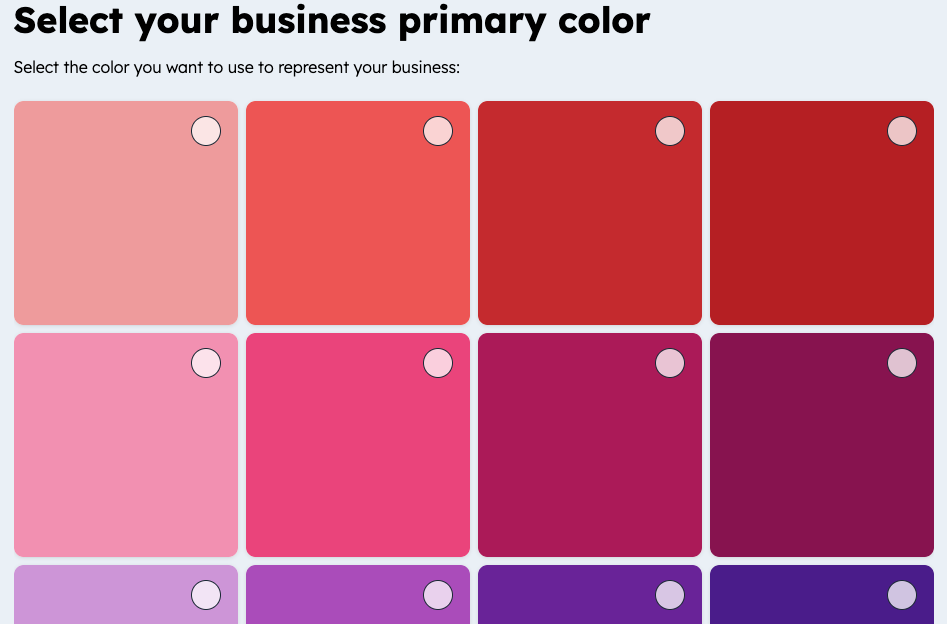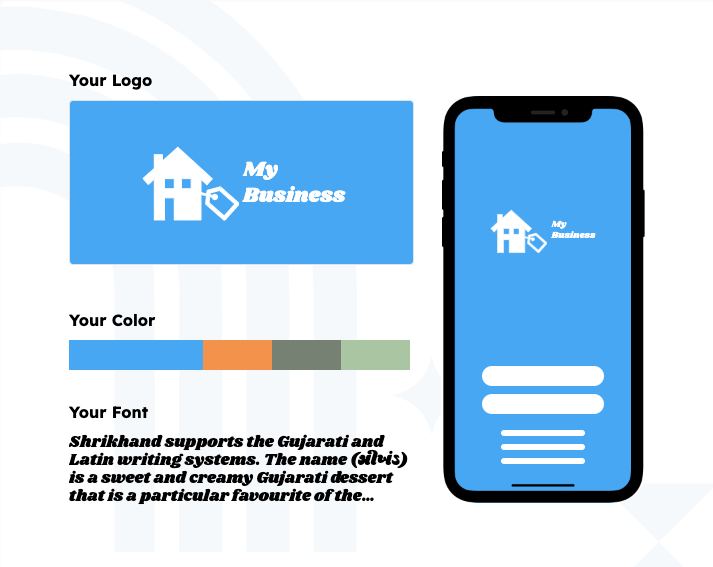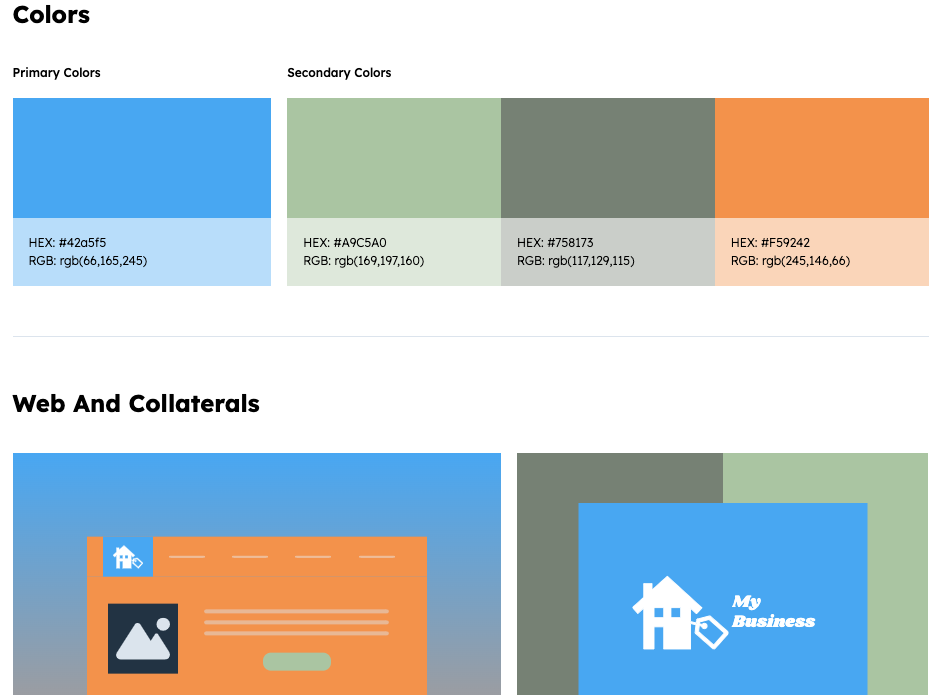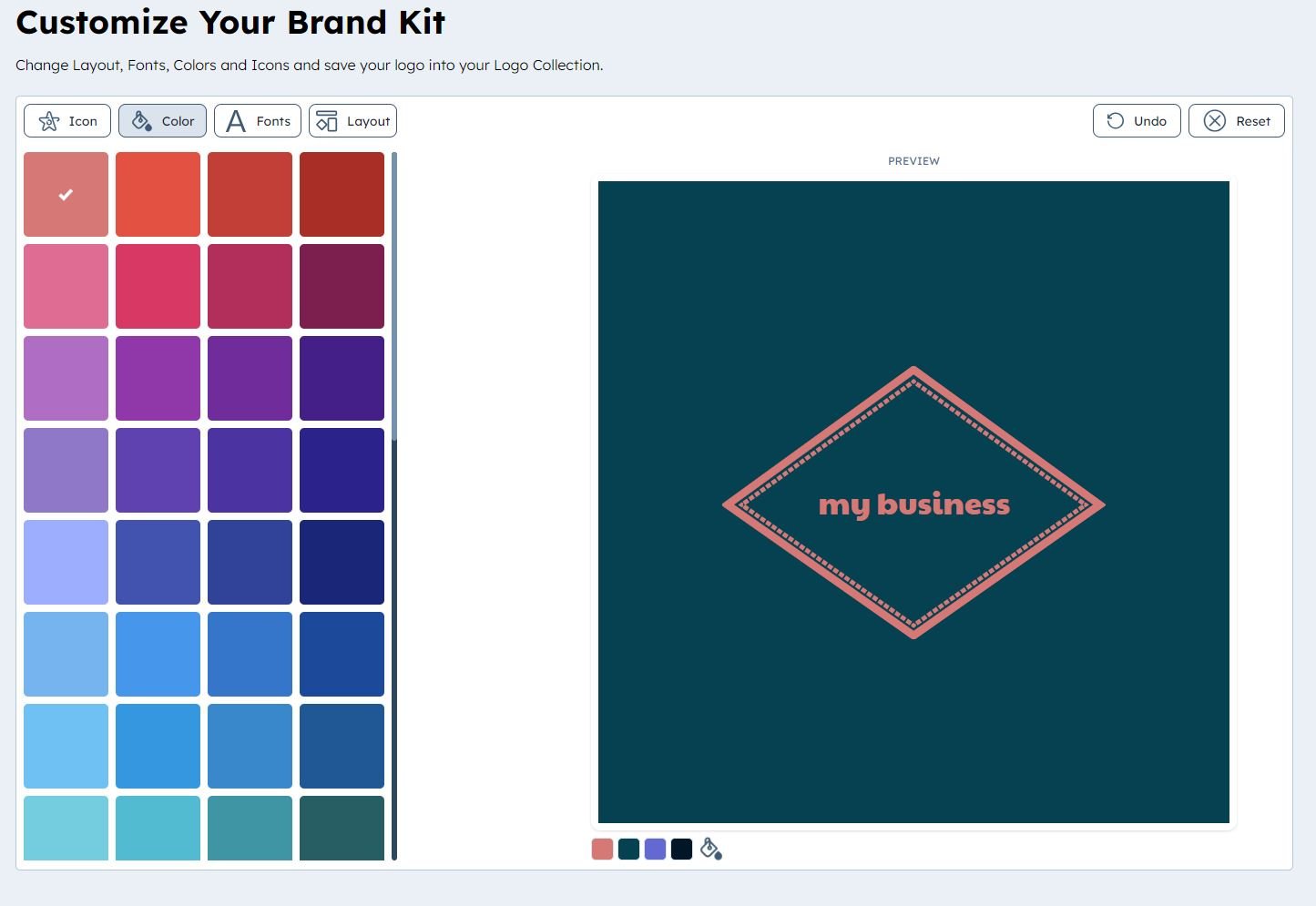What is a color palette?
A color palette is a collection of colors chosen to create a specific aesthetic and emotional impact in design. It can include various combinations like complementary, analogous, triadic, or monochromatic schemes, each offering a unique visual experience. These palettes are essential in conveying themes, moods, and brand identities.
What is a color palette generator?
A color palette generator is a digital tool designed to help create a cohesive set of colors for use in various designs. In branding, this tool is particularly valuable as it helps in defining a color scheme that embodies a brand's identity. The primary function of a color palette generator is to assist brands in selecting colors that not only represent their values and message, but also ensures consistency and appeal across different mediums such as websites, logos, business cards, and social media platforms

Set the tone for your brand
Colors can evoke specific feelings and associations in a consumer’s mind. By carefully selecting the perfect set of colors for your brand, you can create a sense of excitement and innovation or trust and dependability.
With our free color palette generator, you can browse thousands of color palette recommendations to get inspiration for your brand.

Benefits of using a color palette generator
Using a color palette generator can significantly enhance your brand's visual identity and overall impact. This tool not only streamlines the design process but also ensures that your brand communicates its message effectively through color.
Here are some detailed benefits of using a color palette generator:
Brand Consistency Across Materials: A color palette generator ensures uniformity in your brand's visual presentation. By providing a consistent color scheme across all brand materials, from your website to your marketing collateral, it plays a pivotal role in building strong brand recognition. This consistency helps in creating a cohesive brand image that is easily identifiable by your audience.
Establishing Emotional Connections: Colors have the power to evoke emotions and set the tone for your brand's communication. The right choice of colors can create a strong emotional connection with your audience, influencing their perception and attitude towards your brand. A color palette generator helps in selecting color schemes that resonate with your brand's values and the emotions you want to evoke, ensuring a deeper engagement with your audience.
Enhancing Professionalism in Brand Materials: A well-chosen color palette contributes significantly to the professional appearance of your brand materials. It adds an element of sophistication and thoughtfulness to your designs, which can elevate the appearance of your brand. The color palette generator aids in selecting harmonious and aesthetically pleasing color combinations that help reflect the quality and professionalism of your brand.
Streamlining the Color Selection Process: Choosing the right colors for your brand can be a complex and time-consuming process. A color palette generator simplifies this by offering a streamlined, efficient approach to selecting and applying a cohesive color scheme. This not only saves time but also reduces the effort involved in trial-and-error, allowing you to focus more on other aspects of your branding strategy.
Create a custom color palette for your brand
- Pick your company’s main color in the color palette maker
Select your brand’s primary color. It'll be the color representing your brand the most and the foundation for the rest of your color scheme. - Choose your complementary colors
After you’ve chosen a primary color, our color picker automatically suggests three complementary colors for your brand. You can continue generating different color combinations until you have a scheme that creates the visual effect you want.
Choosing different shades of the same color creates a calm and harmonious feeling. However, if you want to generate more excitement, you can use contrast by choosing colors opposite one another on the color wheel (such as blue and orange). - Choose a color scheme from the generator
Our color scheme generator will provide several full-color palette options that add neutral tones to your chosen primary and complementary colors. Choose the best color palette for your brand based on the visual impression and feelings generated by the colors. - Customize your color palette
Customize your palette by editing any colors generated by the color palette creator until it is a perfect fit for your brand. Once you’ve selected your color palette, it will automatically be applied to the logo you created in the brand kit generator.
You’ll also get hex codes and swatches for each color so you can add them to a brand identity book and use them in templates and designs.

Tips for choosing the right color palette for your brand
When creating a color palette, you want to start with your primary color first — the color that most represents your brand. Once you have a primary color, you can select two or three complementary colors and one or two neutrals.
Your primary color should evoke the feeling you want people to experience when they see your brand.
Color theory and color psychology can be especially helpful when choosing primary and complementary colors. Here are some of the more common feelings associated with different colors.
- Blue: trust, competence, loyalty
- Red: excitement, love, strength
- Yellow: happiness, energy, creativity
- Orange: friendliness, confidence, success
- Green: nature, healing, freshness, growth
- Black: security, class, formality
- Brown: outdoors, friendliness, dependability
Experimenting with color tints and gradients can also create different effects. For example, pastels create a more soft and calming experience than bold colors with high saturation. When choosing a color palette for your brand, it's important to consider your audience's preferences and the common color themes within your industry. The colors should align with the emotional response you intend to evoke in your audience. It's also crucial to ensure that your colors are accessible and distinguishable, keeping in mind those with visual impairments. Testing different palettes and gathering feedback is a key step in finalizing the colors that best represent your brand.
